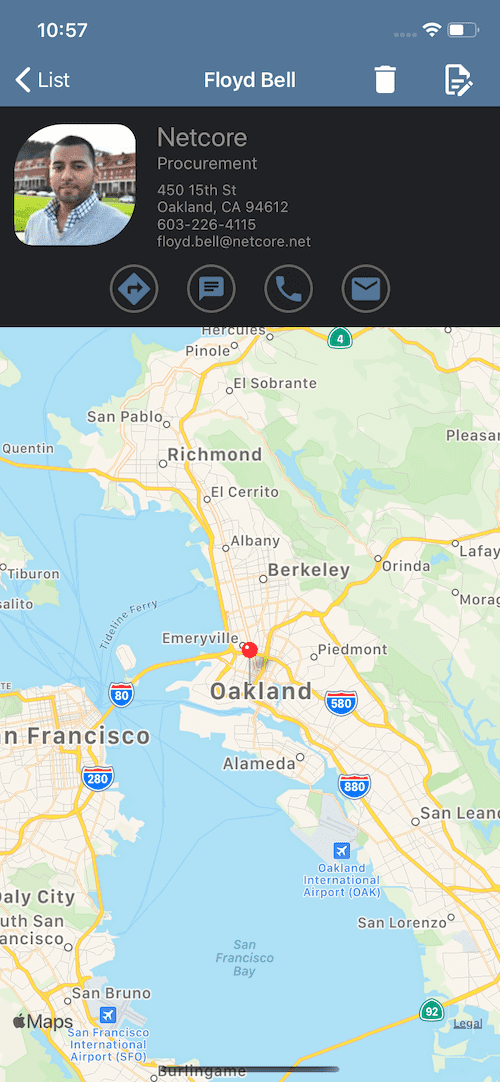Converting My Contacts: Step 4. Finishing it up
September 23, 2020
This article is a part of a series on converting My Contacts app using Laconic. The start of the series is here.
Step 4: Completing the Migration
The final screen we migrated is Contact Details:
Bindings for Xamarin.Forms.Maps are provided by a separate project inside the Laconic’s repository.
All MVU, No MVVM
With the migration complete we removed all XAML, all vestiges of MVVM. No more type converters, no more markup extensions. No more DI, no more commands, no more data binding. Good stuff, but rather than explaining here the difference and advantages of MVU vs MVVM may I ask you to read this excellent article by Timothé Larivière on Xamarin’s blog?
Laconic is built on the same principles as Fabulous, although the terminology is different. As with Fabulous, our app
has an immutable
state, and a pure function for updating
it, called MainReducer. The reducer takes the current state and a signal, which is the Laconic’s name for messages,
and returns the updated state.
Like in Fabulous this new state is passed to pure functions that calculate virtual views called blueprints. Blueprints are unambiguous definitions of how the app views must appear given the current state. Laconic’s diff/patch mechanism then decides which properties of actual Xamarin.Forms views should be updated.
3rd Party Controls
The updated code gives an example of how to bring third party controls into the Laconic’s diff/patch cycle. The original codebase used PancakeView, and to make it work we wrote a small binding class.
Middleware
Our app makes calls to file system (or network), queries device sensors, must react to device theme changes. These interactions are not pure by definition. We put all impure code in middleware, neatly wired in one place in the App’s constructor.
Final Stats
Original codebase:
------------------------------------------------------------------
Language files blank comment code
------------------------------------------------------------------
C# 51 435 250 1952
XAML 9 103 19 922
MSBuild script 6 13 7 597
XML 12 20 32 476
JSON 4 0 0 157
Bourne Shell 3 6 2 17
------------------------------------------------------------------
SUM: 85 577 310 4121
------------------------------------------------------------------Character count, XAML and C# files: 130,047
Full Laconic codebase:
------------------------------------------------------------------
Language files blank comment code
------------------------------------------------------------------
C# 30 283 155 1680
MSBuild script 6 11 7 574
XML 12 20 32 476
JSON 4 0 0 157
XAML 2 3 0 19
Bourne Shell 3 6 2 17
------------------------------------------------------------------
SUM: 58 346 196 2961
------------------------------------------------------------------(Remaining XAML is in UWP project which wasn’t touched)
Character count, XAML and C# files: 82,240
I’d say this is quite a reduction in size… But more importantly, the resulting code is easier to understand and maintain.
Here is the commit for this step.
